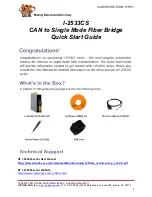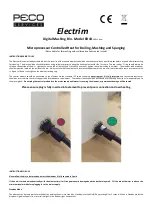
深圳市乐迪电子有限公司
70
• Idling position: Range of -50% to +50% centered about the throttle idle position to get the desired engine
RPM.
• Switch assignment: Assigned to SWITCH E(AT10) or G (AT10) down. Adjustable in the CONDITION
(THR-HOLD item), (2-position type switch only)
• Throttle curve: Since the throttle is moved to a single preset position, no curve is available for THR-HOLD.
• Collective pitch curve: Independent curve, typically adjusted to create a blade pitch range of -4% to +10% to
+12%, is automatically activated with THRHOLD.
• Revo. mix: Since revo. mix adjusts for torque from the engine, no revo. mix is available for THR-HOLD.
• Priority: The throttle hold function has priority over idle-up. Be sure that the throttle hold and idle-up
SWITCHES are in the desired positions before trying to start the engine. (We recommend starting your engine
in throttle hold for safety reasons.)
• Gyro: Gyro programming includes an option to have a separate gyro setting for each condition, including
THR-HOLD. This avoids the potential problem of the user being in the wrong gyro setting when going to
THR-HOLD, resulting in an improper rudder offset and the model pirouetting.
Goals
Steps
Inputs
S
et
up throttle hold.
Determine desired throttle
position by idling engine, turn
on THR-HOLD, and adjust
percentage as required to reach
the desired running point.
Open THR-HOLD
function.
for 1s to BASIC.(If ADVANCE
again)
to THR-HOLD
Activate the function.
to MIX
,
to OFF
Set desired engine
position.
to POSI
,
to desired percent
Close
3.3.6 HOVERING ADJUSTMENTS (HOV-THR and HOV-PIT):
Hovering throttle and hovering pitch are fine-turning adjustments for the throttle and collective pitch curves
individually, affecting performance only around the center point and only in the normal condition. They allow
in-flight tweaking of the curves for ideal setup.
Adjustability:
• Rotor speed changes caused by temp., humidity, altitude or other changes in flying conditions are easily
accommodated.
• Both adjustments may be inhibited if not desired.
• Both adjustments may also be set to NULL, temporarily turning off the knob but maintaining the last













































